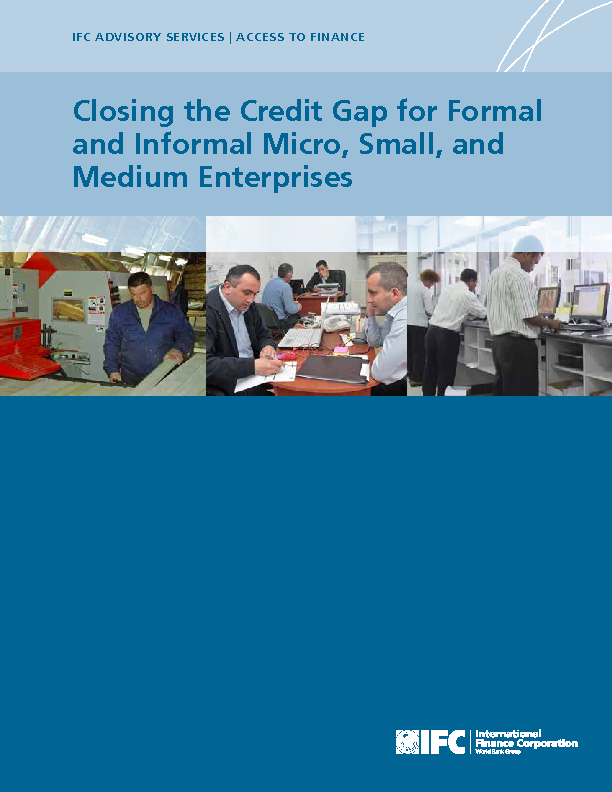Closing the Credit Gap for Formal and Informal Micro, Small, and Medium Enterprises

Job creation and economic growth through private sector development have become primary areas of focus for policy makers around the world in the aftermath of the global financial crisis. Recent evidence points to the importance of small and medium enterprises (SMEs)1 in providing employment across countries. In addition to employing the largest number of people in aggregate, SMEs generate the most new jobs (Ayyagari et al., 2011). But SMEs also face many challenges in day-to-day operations and to grow. Access to finance is often cited as one of the primary obstacles that affect SMEs disproportionately (Ayyagari et al., 2012), and lack of data has made it very difficult to determine the exact size of the financing gap. Using data from the World Bank Enterprise Surveys (WBES) in 2010, IFC estimated the size of the global micro, small, and medium enterprise (MSME) financing and deposit gap, and the regional variations (Stein et al., 2010). As more and better quality data became available, especially on the informal sector, IFC updated the database.2 In this note, we report back on the state of the credit gap for MSMEs with this new and updated data, while providing additional focus on the sizable informal enterprise sector in the developing world.
